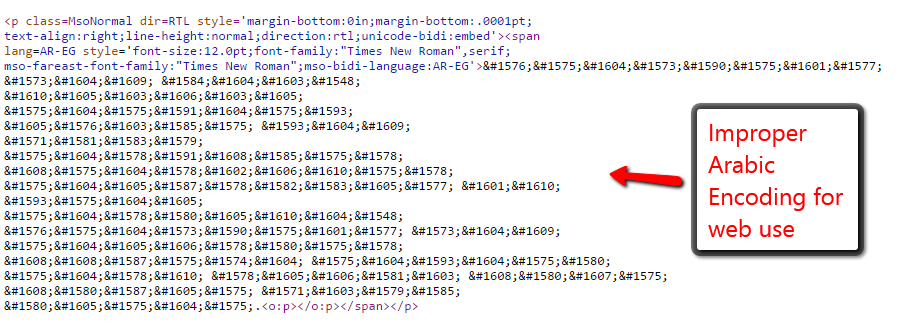Arabic Lorem Ipsum is the Arabic form of the latin text that is typically used by designers and developers as dummy text. This Arabic dummy text is used for various designs, webpages, brochures, and many other projects where temporary content is needed to fill a space before the desired content for that space is available.
If you’re reading this, you’ve probably been tasked with creating an Arabic website or landing page. Of course no one provided you with any Arabic content so you’re looking for some Arabic dummy text or Arabic Lorem Ipsum text to fill in the website until someone provides you with the necessary Arabic content. Well you’ve come to the right place. Here you will find a variety of lorem ipsum text in Arabic including long paragraphs, short paragraphs, bulleted lists, numbered lists, unordered lists an empty table, an example Arabic form, definition list, a standard navigation, and even the kitchen sink in Arabic.
Download the complete Arabic Lorem Ipsum HTML File here
Arabic Lorem Ipsum Background
Technically Arabic Lorem Ipsum only exists because designers and web developers needed something to use to fill in empty content spaces in their designs and in development projects they’re working on. To be clear the Arabic version of Lorem Ipsum is not a translation of the latin Lorem Ipsum because in essence the Latin version is not even understood to most English speakers. The Arabic version is just jumbled Arabic text and it only bears a connection with the Latin version in the sense that they are both used as dummy text and the Arabic version owes its name to the origin of lorem ipsum.
Download the Top Free Readable Web Fonts
Some helpful pointers when you’re using Arabic Lorem Ipsum
Arabic is a right to left language instead of a left to right language like English. This means that for Arabic to show up properly on a web page either the complete body of the web page needs to be set to right to left or the section you are using Arabic in should be set to right to left. This can be accomplished with the direction tag within the HTML element that you are manipulating. Here are several examples of what the code looks like at different places within the HTML:
<p dir=”rtl”> </p>
<div dir=”rtl”> </div>
<body dir=”rtl”> </body>
<span dir=”rtl”> </span>
Proper UTF-8 Character Encoding for Arabic
All the lorem ipsum text on this page uses proper UTF-8 encoding for Arabic characters. ANSI will not work. It’s important to note that some CMS or WYSIWYG editors will convert Arabic characters into other encoding formats which aren’t ideal for the web. To check to make sure your Arabic characters remained encoded properly in your HTML, make sure to view the source code of the page and confirm you can still see the characters properly in the HTML.
If there is an issue with the encoding you might see your Arabic characters encoded in a way that looks something like this.
Common issues with using Arabic dummy text
Please make note that dummy text like Arabic lorem ipsum should only be used on websites or web pages that haven’t been published for public use. There are a couple of reasons for this. First, if a public page only contains filler text it will lead to a bad user experience and increase the likelihood that a visitor to your website will just bounce off the website. To add to this modern search engines like Google penalize websites for excessive use of duplicate content from other websites. Since Arabic filler text will be the same as text on other websites there is a good chance that Google may penalize your website in its search rankings for this content or consider your website poorly maintained. This makes sense because a website that is truly serving its users would not leave nonsensical content in places on the website users are likely to see it.
Other Common Arabic Website Issues
Common Questions about using Arabic Lorem Ipsum
Why is the period in a sentence showing up on the wrong side of the sentence?
Since Arabic is a right to left language, periods should show up on the left side of the sentence. If the periods show up on the right you need to make sure your “rtl” tags in the HTML element you are using are written properly. See the above section for how the dir=”rtl” tags should be used.
Why do Arabic characters not show up in the URL of the page I am working on?
For an indepth review of Arabic URLs, see this link.
Why does the Arabic lorem ipsum text on my website appear smaller than the English text?
Arabic fonts often appear a size or two smaller than their English counterparts. In light of this we recommend increasing the font size of your Arabic text to be slightly larger than the English fonts.
Should I expect translated Arabic text to take up more or less space than the original English text?
Typically, translated Arabic text takes up a little more space than the original English text. We recommend allocating 10-20% more space for the Arabic.
Arabic text appears to have far fewer punctuation marks like periods than English. Is that normal?
Yes, Arabic sentences and paragraphs often use less punctuation than English does.
Why are Arabic characters showing up slightly separated from each other when they should be connected?
This is normally a CSS issue related to kerning. Kerning is usually applied to English words to add small degrees of spacing between characters in a word to make the word take up more or less space. Kerning however should never be used with Arabic characters since it breaks the proper cursive nature of the Arabic script. We recommend that you use a different CSS class that doesn’t use kerning for Arabic scripts.


